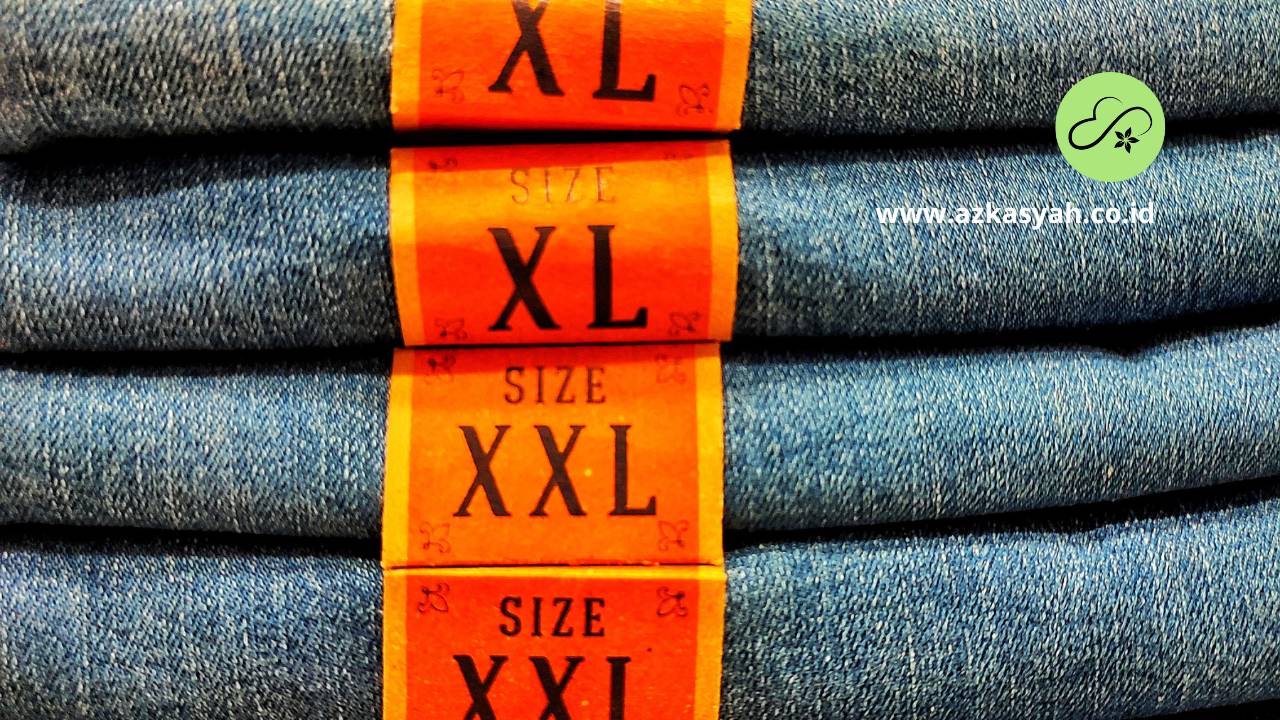Mastering Clothing Sizes
Navigating the world of clothing sizes can be a daunting task, especially when dealing with international standards and diverse body shapes. Whether you’re shopping online or in-store, understanding clothing sizes and applying fit tips can significantly enhance your shopping experience, ensuring you look and feel your best. This guide aims to demystify clothing sizes across various countries and provide practical fit tips tailored to different body types.
Understanding International Clothing Size Standards
Clothing sizes are not universally standardized, which means a size in one country might not correspond directly to a size in another. Here’s a breakdown of standard sizing across major regions:
United States (US) Sizes
- Women’s Sizes: Typically range from 0 to 20, with increments of 2 (e.g., 0, 2, 4,…20).
- Men’s Sizes: Often based on chest measurements in inches (e.g., 34, 36, 38,…50).
United Kingdom (UK) Sizes
- Women’s Sizes: Similar to US but generally one size lower (e.g., US 4 is UK 8).
- Men’s Sizes: Similar to US, but neck and sleeve sizes may differ slightly.
European (EU) Sizes
- Women’s Sizes: Use even numbers ranging from 32 to 54.
- Men’s Sizes: Based on chest measurements in centimeters.
Australia (AU) Sizes
- Women’s Sizes: Comparable to UK sizes but may vary by brand.
- Men’s Sizes: Similar to UK but with minor differences in measurements.
Japan (JP) Sizes
- Women’s Sizes: Use S, M, L, etc., often with numerical equivalents.
- Men’s Sizes: Typically based on neck and sleeve measurements.
Conversion Tips
When shopping across different regions, it’s essential to use a reliable size conversion chart or refer to the specific brand’s sizing guide, as sizes can vary even within the same country.
Fit Tips for Various Body Types
Understanding your body type is crucial in selecting clothes that enhance your best features and provide a comfortable fit. Here are fit tips for different body shapes:
1. Hourglass Body Type
Characterized by a well-defined waist and balanced proportions between the bust and hips.
Fit Tips:
- Emphasize the Waist: Use belts or fitted garments to highlight your waist.
- Choose Fitted Tops and Bottoms: Tailored clothing that follows your curves.
- A-line Dresses and Skirts: These can accentuate the waist and flow over the hips.
2. Pear Body Type
Defined by hips being wider than the shoulders, with a well-defined waist.
Fit Tips:
- Highlight the Upper Body: Use bright colors and patterns on tops to draw attention upward.
- A-line and Bootcut Pants: These can balance the hips.
- Structured Jackets: Add definition to the shoulders.
3. Apple Body Type
Characterized by a fuller midsection with slimmer legs and arms.
Fit Tips:
- V-neck Tops: Create a longer, leaner look for the upper body.
- Flowy Dresses and Tunics: These can provide comfort and conceal the midsection.
- High-Waisted Pants: Define the waist and create a balanced silhouette.
4. Athletic Body Type
Lean and muscular with broad shoulders and a straight silhouette.
Fit Tips:
- Soft Fabrics and Layering: Add softness to your frame.
- Ruffled or Detailed Tops: Create the illusion of curves.
- Fitted Jeans and Trousers: Accentuate your toned legs.
5. Petite Body Type
Shorter stature with a smaller frame.
Fit Tips:
- Monochromatic Outfits: Create a longer, vertical line.
- High-Waisted Bottoms: Elongate the legs.
- Vertical Stripes and Patterns: Enhance the height.
6. Tall Body Type
Above-average height with long limbs.
Fit Tips:
- Avoid Excess Fabric: Streamlined clothing prevents looking overwhelmed by your height.
- Layer Strategically: Use layers to add depth without adding bulk.
- Horizontal Patterns: Break up the vertical line to create balance.
Detailed Sizing Guides for Women
US Women’s Size Chart
| US Size | Bust (inches) | Waist (inches) | Hips (inches) |
|---|---|---|---|
| 0 | 31 | 23 | 33 |
| 2 | 32 | 24 | 34 |
| 4 | 33 | 25 | 35 |
| 6 | 34 | 26 | 36 |
| 8 | 35 | 27 | 37 |
| 10 | 36 | 28 | 38 |
| 12 | 37 | 29 | 39 |
| 14 | 38 | 30 | 40 |
| 16 | 39 | 31 | 41 |
| 18 | 40 | 32 | 42 |
| 20 | 41 | 33 | 43 |
UK Women’s Size Chart
| UK Size | Bust (inches) | Waist (inches) | Hips (inches) |
|---|---|---|---|
| 4 | 31 | 23 | 33 |
| 6 | 32 | 24 | 34 |
| 8 | 33 | 25 | 35 |
| 10 | 34 | 26 | 36 |
| 12 | 35 | 27 | 37 |
| 14 | 36 | 28 | 38 |
| 16 | 37 | 29 | 39 |
| 18 | 38 | 30 | 40 |
| 20 | 39 | 31 | 41 |
| 22 | 40 | 32 | 42 |
| 24 | 41 | 33 | 43 |
EU Women’s Size Chart
| EU Size | Bust (cm) | Waist (cm) | Hips (cm) |
|---|---|---|---|
| 32 | 80 | 60 | 88 |
| 34 | 84 | 64 | 92 |
| 36 | 88 | 68 | 96 |
| 38 | 92 | 72 | 100 |
| 40 | 96 | 76 | 104 |
| 42 | 100 | 80 | 108 |
| 44 | 104 | 84 | 112 |
| 46 | 108 | 88 | 116 |
| 48 | 112 | 92 | 120 |
| 50 | 116 | 96 | 124 |
| 52 | 120 | 100 | 128 |
| 54 | 124 | 104 | 132 |
Detailed Sizing Guides for Men
US Men’s Size Chart (Shirts)
| US Size | Chest (inches) | Waist (inches) |
|---|---|---|
| XS | 34-36 | 28-30 |
| S | 36-38 | 30-32 |
| M | 38-40 | 32-34 |
| L | 40-42 | 34-36 |
| XL | 42-44 | 36-38 |
| XXL | 44-46 | 38-40 |
UK Men’s Size Chart (Shirts)
Similar to US, but neck and sleeve lengths may vary.
EU Men’s Size Chart (Shirts)
| EU Size | Chest (cm) | Waist (cm) |
|---|---|---|
| 44 | 86 | 71 |
| 46 | 90 | 75 |
| 48 | 94 | 79 |
| 50 | 98 | 83 |
| 52 | 102 | 87 |
| 54 | 106 | 91 |
| 56 | 110 | 95 |
| 58 | 114 | 99 |
| 60 | 118 | 103 |
Fit Tips for Different Clothing Items
Tops
- Blouses and Shirts: Ensure shoulder seams align with your natural shoulder line. Avoid fabric bunching or pulling at the sleeves and chest.
- T-shirts: A well-fitting T-shirt should hug your body without being too tight. Avoid excessive bagginess.
- Sweaters: Look for a comfortable fit around the chest and shoulders, allowing for layering without restricting movement.
Bottoms
- Jeans: Consider your rise (the distance from the waist to the crotch) to ensure comfort and the desired silhouette. Slim or straight cuts are versatile, while bootcut or flare styles can balance proportions.
- Trousers: Ensure the waistband fits comfortably without squeezing. The length should be appropriate, with no excessive bunching at the ankles.
- Shorts: Choose a length that flatters your legs without being too short or too long. High-waisted styles can elongate the legs.
Dresses and Skirts
- A-line Dresses: Flatter most body types by cinching at the waist and flaring out.
- Sheath Dresses: Ideal for hourglass figures, as they highlight the waist and curves.
- Maxi Skirts: Great for taller individuals, providing a flowing silhouette.
Outerwear
- Jackets and Coats: Ensure they fit comfortably over your clothing layers. Pay attention to sleeve length and overall length to complement your body type.
- Blazers: Should nip in at the waist to create a tailored look. Ensure the shoulders fit well and the sleeves end just at the wrist.
Shopping Online: How to Choose the Right Size
Shopping online requires extra attention to sizing, as you can’t try on garments before purchasing. Here’s how to ensure a good fit:
1. Know Your Measurements
Use a flexible measuring tape to take accurate measurements of your bust, waist, hips, and inseam. Compare these measurements to the size charts provided by the retailer.
2. Read the Size Guide
Each brand may have slight variations in their sizing. Always refer to the specific size guide on the retailer’s website.
3. Check the Fit Type
Understand whether the garment is designed to be slim, regular, or loose fitting. Choose a fit type that matches your preference and body shape.
4. Read Customer Reviews
Customer feedback can provide insights into whether the garment runs true to size, is larger, or smaller than expected.
5. Consider the Fabric
Some fabrics have more stretch than others. If a garment is made of a stretchy material, you might opt for a slightly smaller size for a snug fit.
6. Use Virtual Fitting Rooms
Some online retailers offer virtual fitting rooms or augmented reality tools to help you visualize how the garment will fit.
Common FAQs about Clothing Sizes and Fit Tips
Q1: Why do clothing sizes vary so much between countries?
A1: Clothing sizes are not standardized globally, and each country may have its own sizing system based on local measurements and fashion standards. Additionally, brands may interpret sizes differently, leading to variations even within the same country.
Q2: How can I convert clothing sizes from one country to another?
A2: The best way to convert sizes is by using a reliable size conversion chart that matches your measurements to the equivalent sizes in different regions. Always refer to the specific brand’s size guide for the most accurate conversion.
Q3: What should I do if I’m between sizes?
A3: If you’re between sizes, consider the fit type and the garment’s fabric. For tighter fits or stretchy materials, opting for the smaller size might work. For looser fits, the larger size could be more comfortable. Additionally, consider the style and how you want the garment to fit your body.
Q4: How do I measure myself accurately for clothing sizes?
A4: Use a flexible measuring tape to take measurements at key points: bust, waist, hips, and inseam for pants. Stand straight and relaxed while measuring, ensuring the tape is snug but not tight.
Q5: Can fit tips help me dress better regardless of my size?
A5: Absolutely. Fit tips are designed to highlight your best features and provide comfort, regardless of your size. Understanding your body type and how different styles complement your figure can enhance your overall appearance and confidence.
Q6: What are some common mistakes to avoid when choosing clothing sizes?
A6: Common mistakes include not taking accurate measurements, ignoring the brand’s size guide, not considering the garment’s fit type, and overlooking fabric stretch. Additionally, relying solely on numerical sizes without considering how the garment fits your body can lead to poor choices.
Q7: How do I choose the right size when shopping for formal wear?
A7: For formal wear, precision is key. Take accurate measurements, choose fabrics with some stretch for comfort, and consider having garments tailored for the perfect fit. Pay attention to details like sleeve length, hemline, and overall silhouette.
Q8: Are there any apps or tools to help with online sizing?
A8: Yes, several apps and tools can assist with online sizing, such as FitPredict, SizeStream, and the virtual fitting rooms offered by some retailers. These tools use your measurements and sometimes even photos to recommend the best size for you.
Q9: How can I maintain the fit of my clothes after washing?
A9: Follow the care instructions on the garment’s label to prevent shrinkage or stretching. Use appropriate water temperatures, avoid over-drying, and consider air-drying delicate items to maintain their shape and fit.
Q10: What if the clothes don’t fit as expected when they arrive?
A10: Check the retailer’s return and exchange policy before purchasing. Many online stores offer easy returns, allowing you to exchange for the correct size. It’s also helpful to keep the original tags and packaging intact until you’re sure the fit is right.
Navigating the world of clothing sizes and achieving the perfect fit doesn’t have to be daunting. By understanding international size standards and applying tailored fit tips for your body type, you can make informed decisions that enhance your wardrobe and boost your confidence. Whether you’re shopping online or in-store, these insights will help you find garments that not only fit well but also complement your unique style and physique. Happy shopping!
Read more also: Transforming the Clothing Industry for a Greener Future Sustainable Fashion



